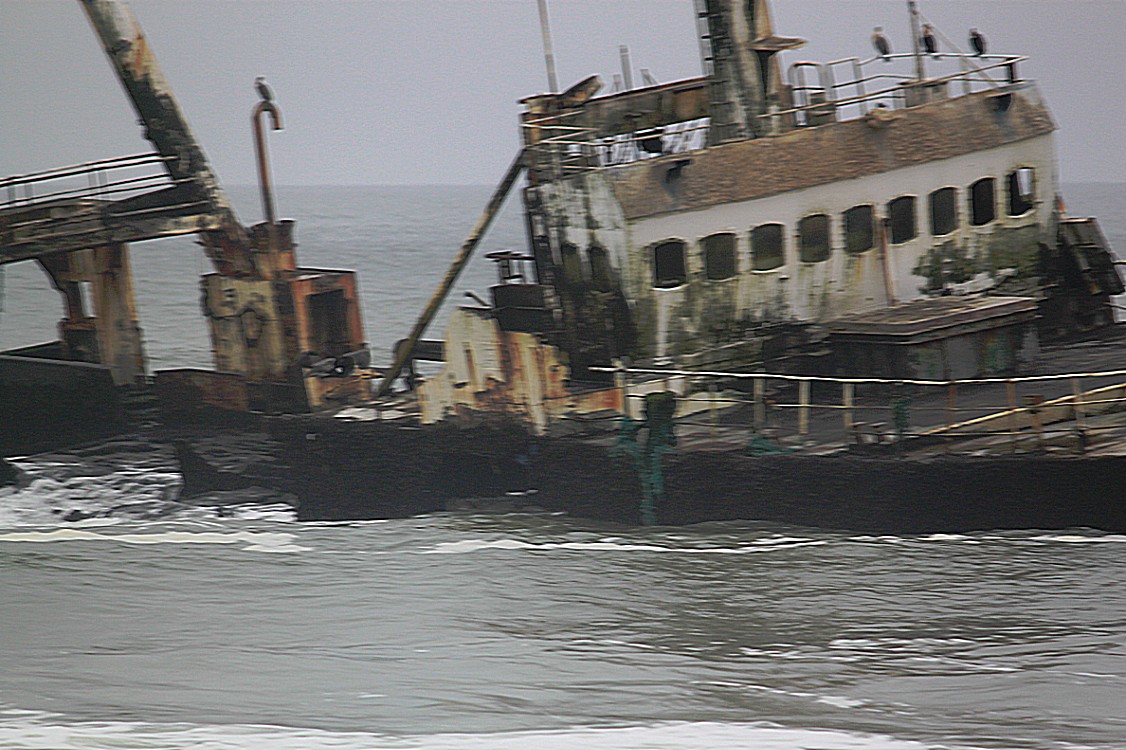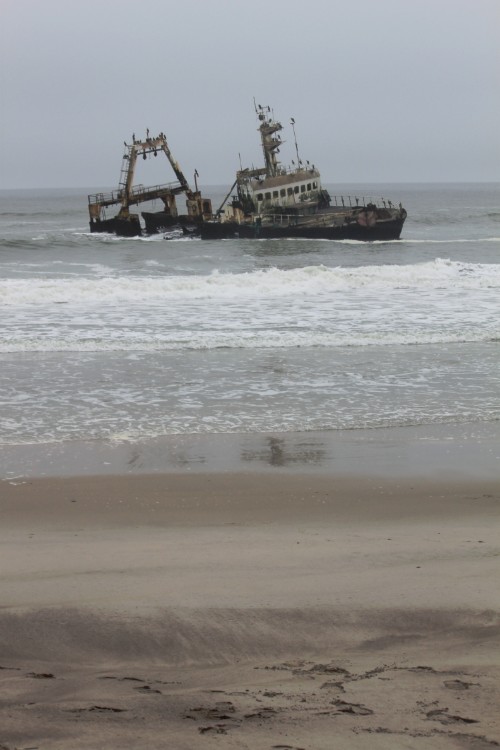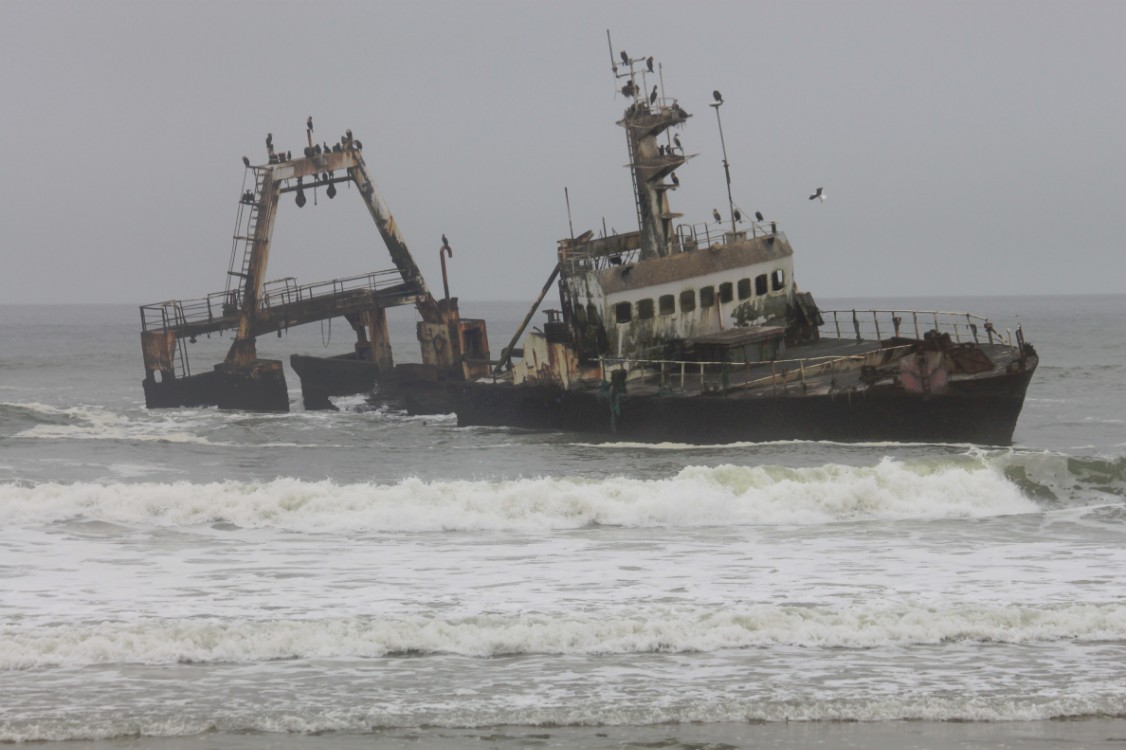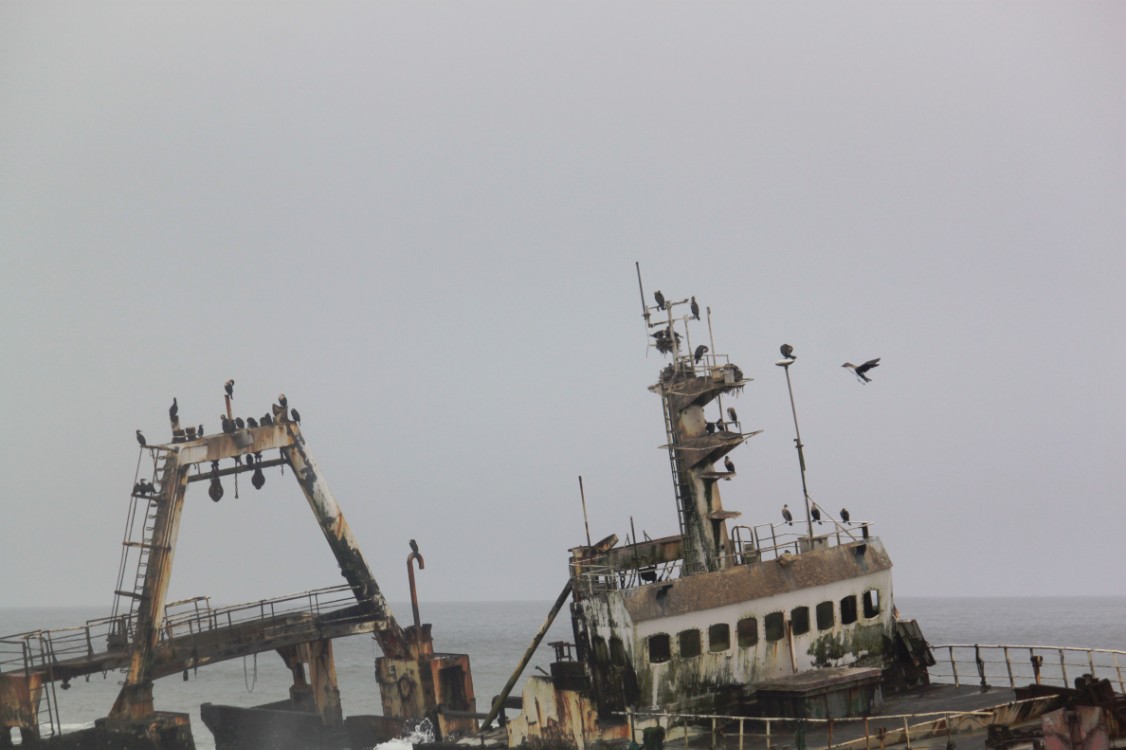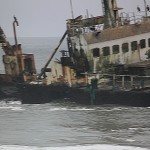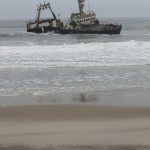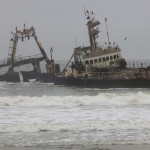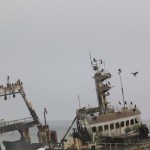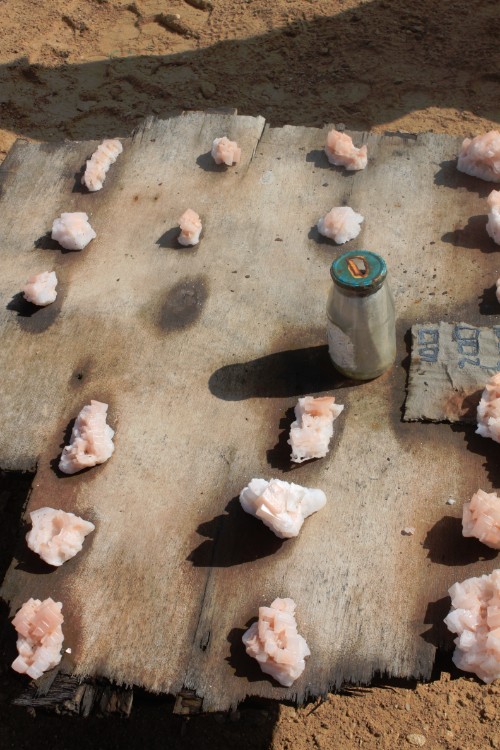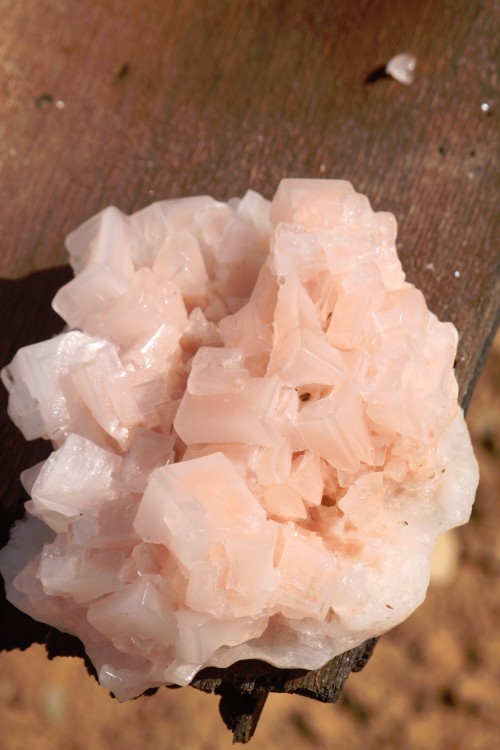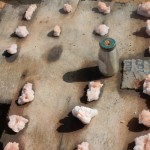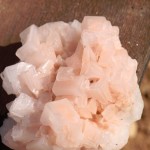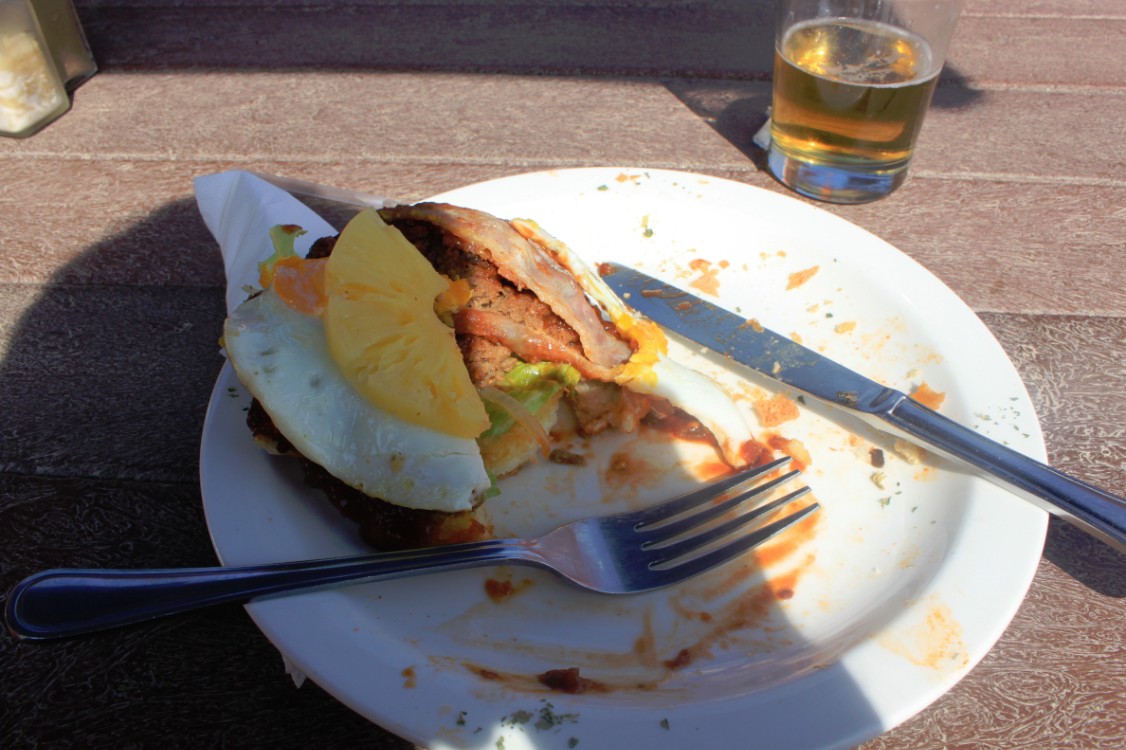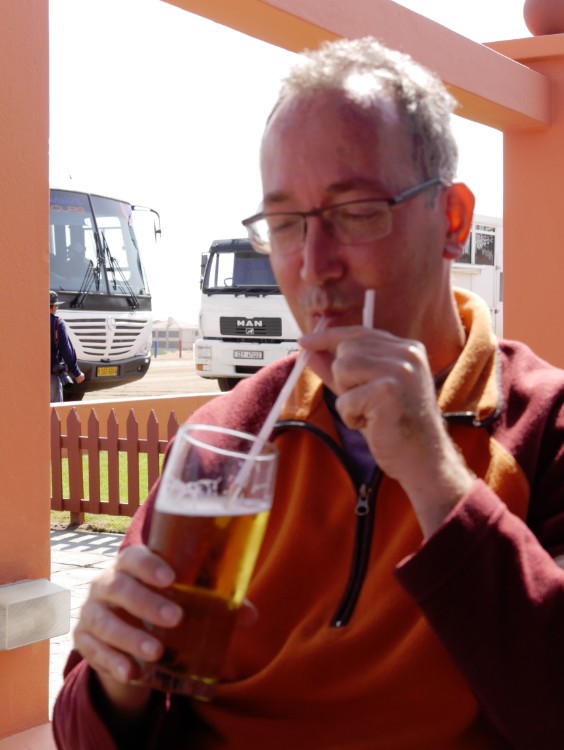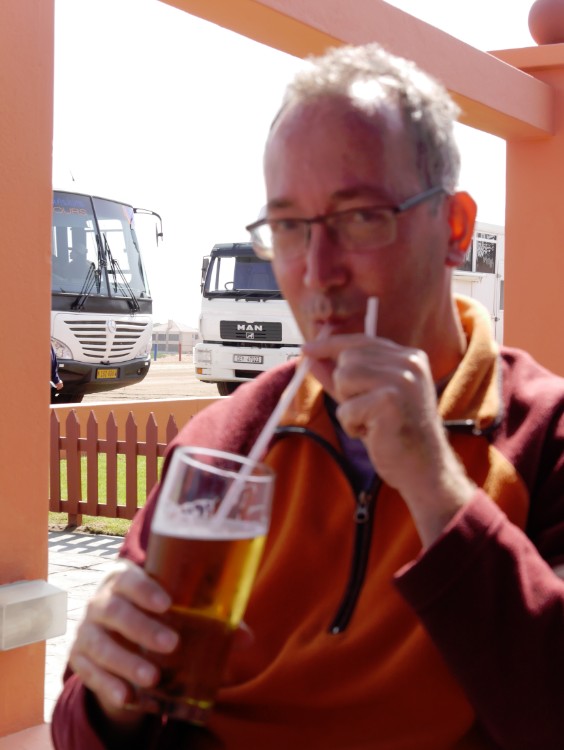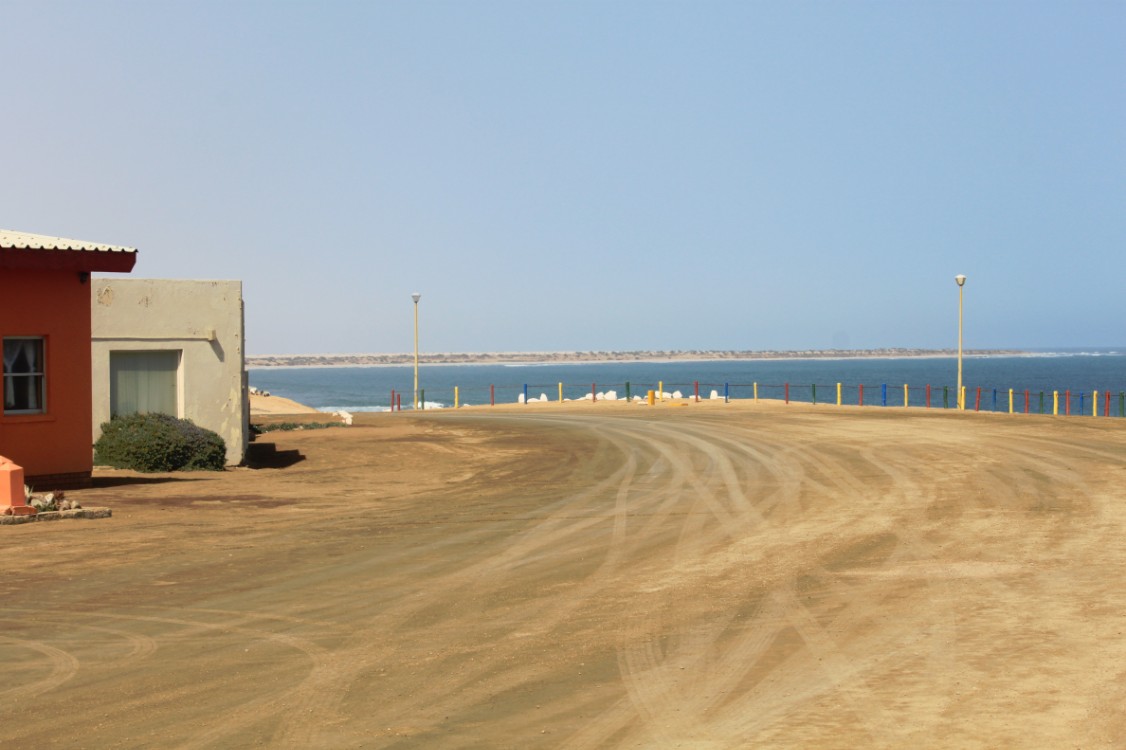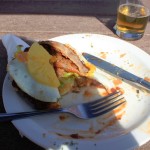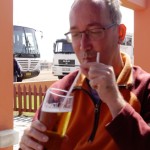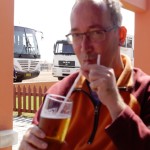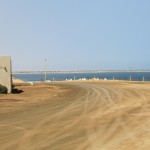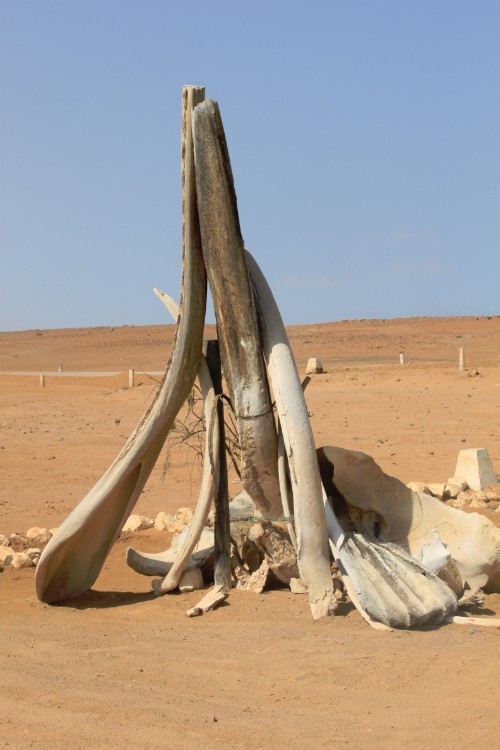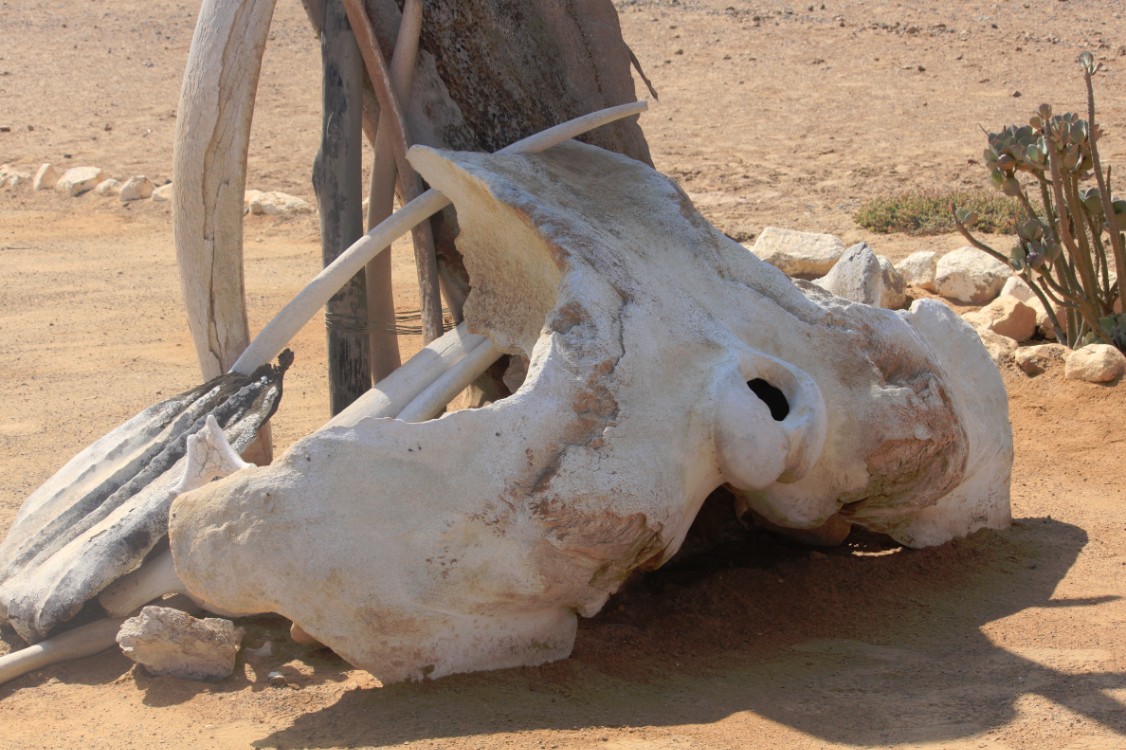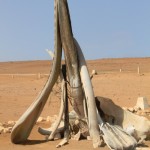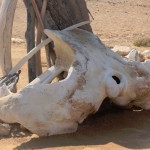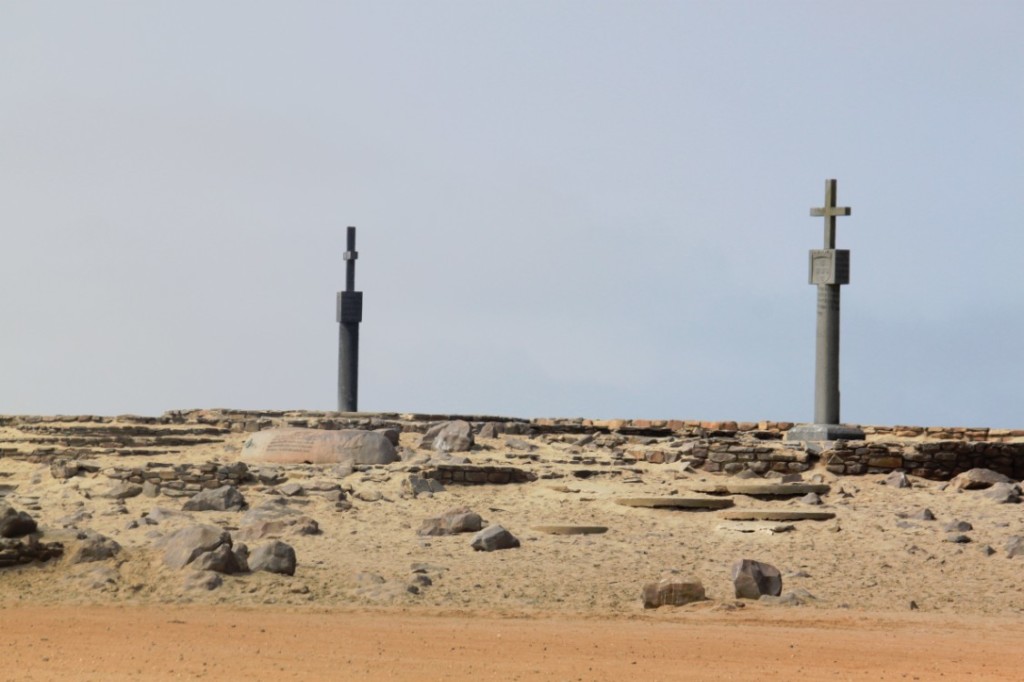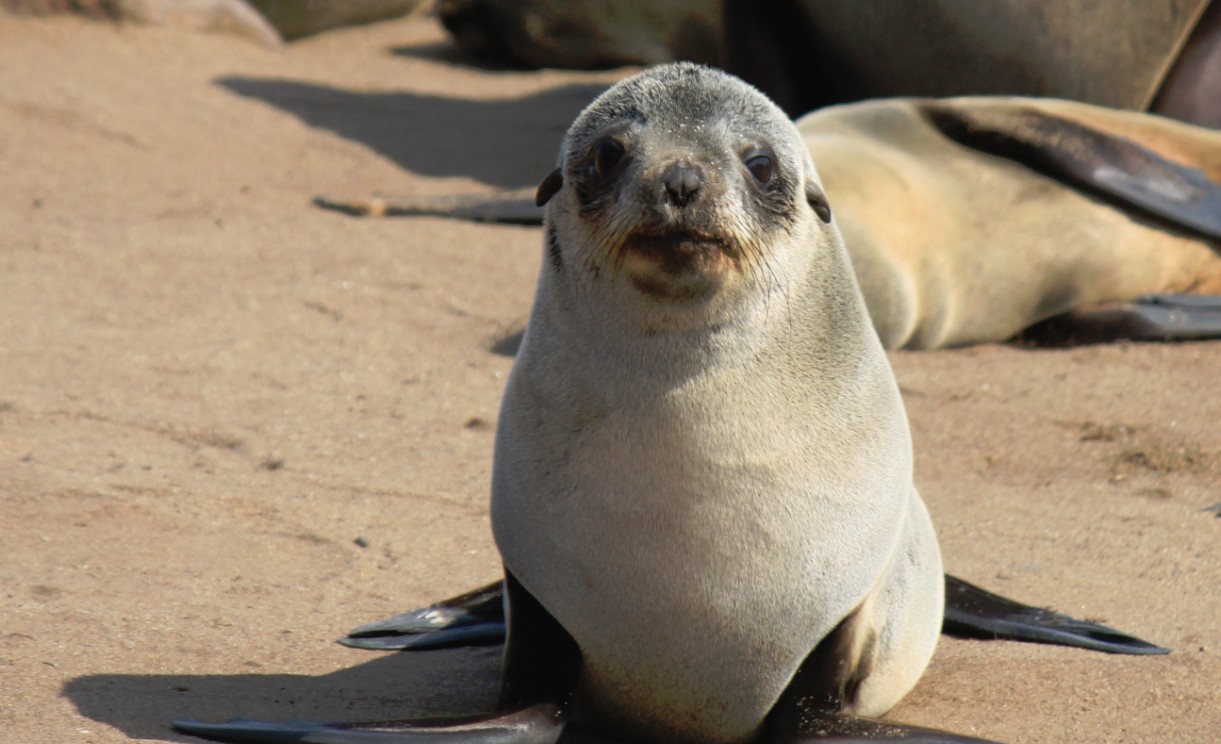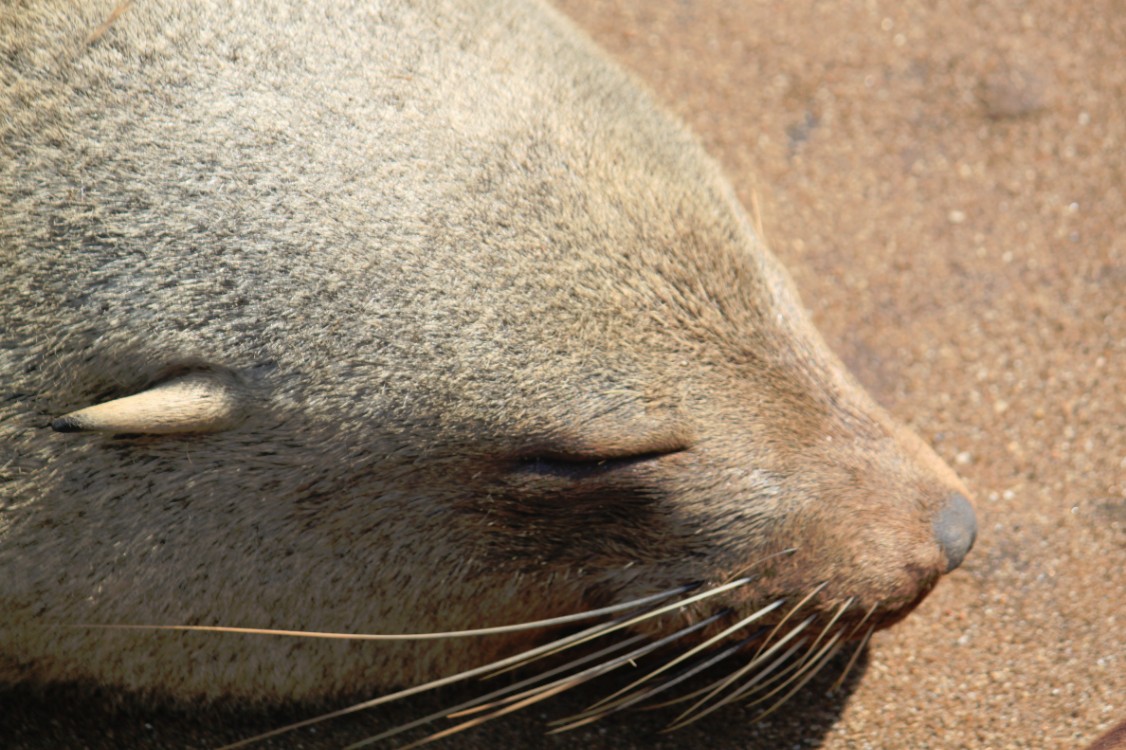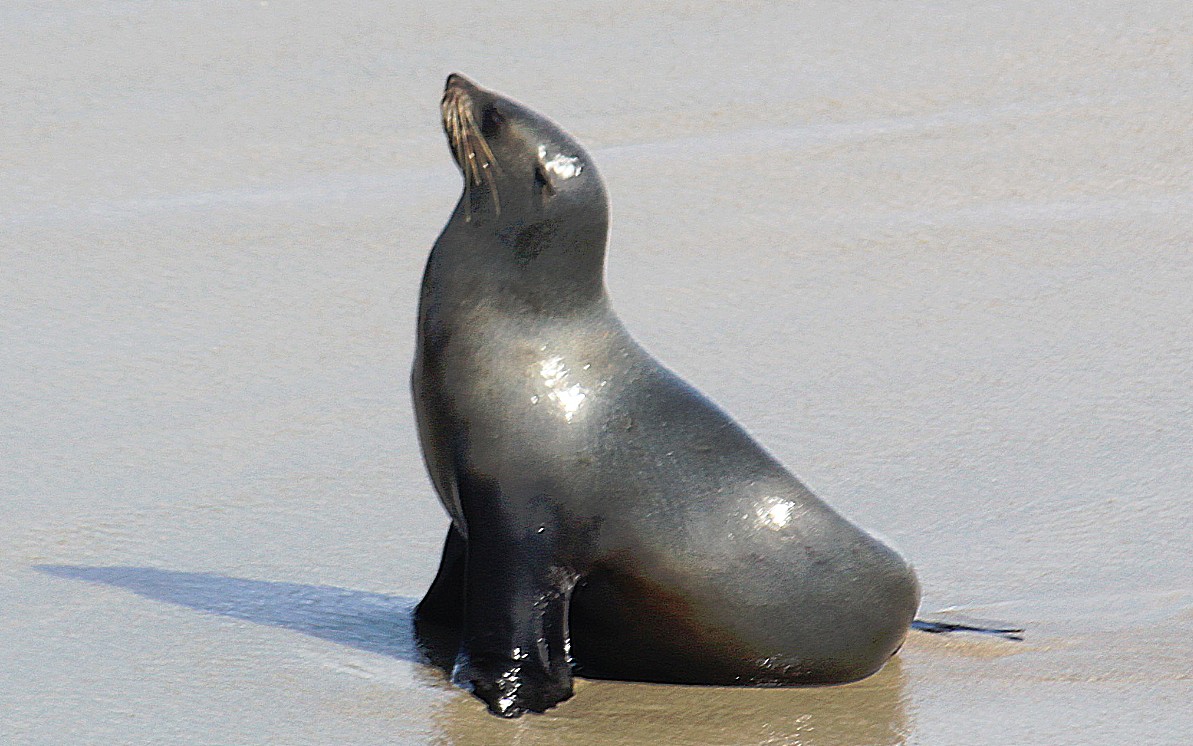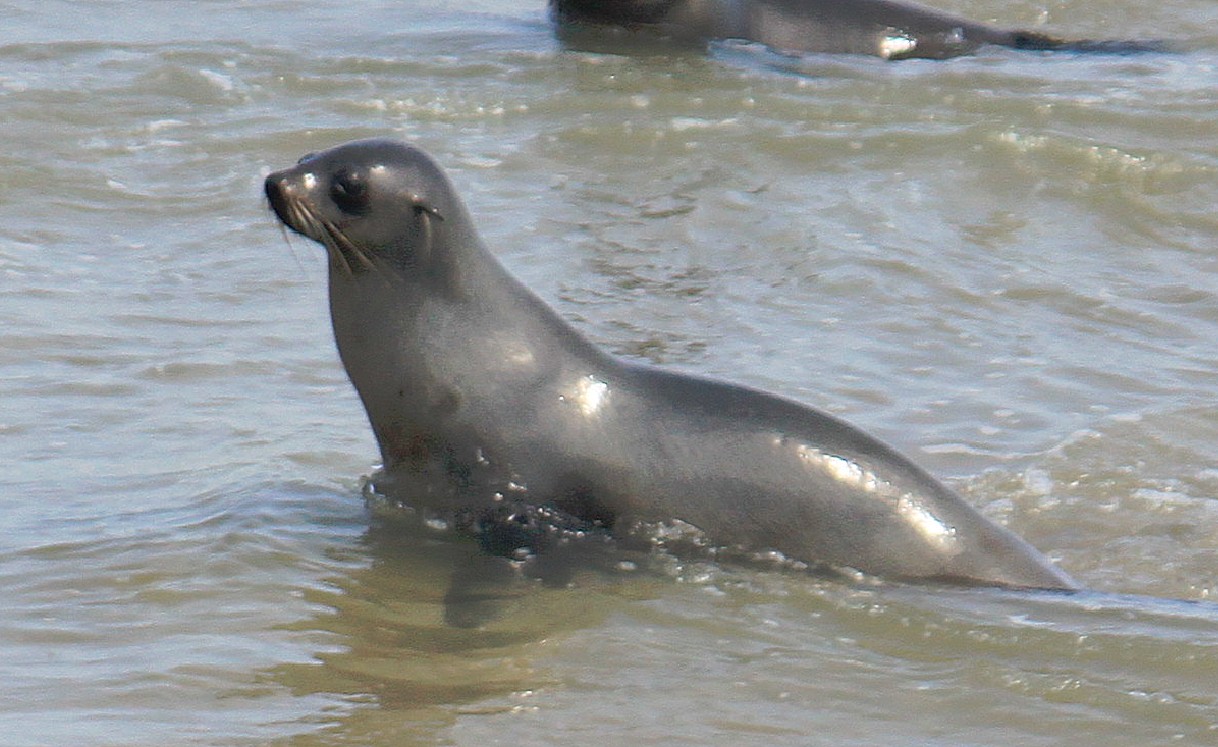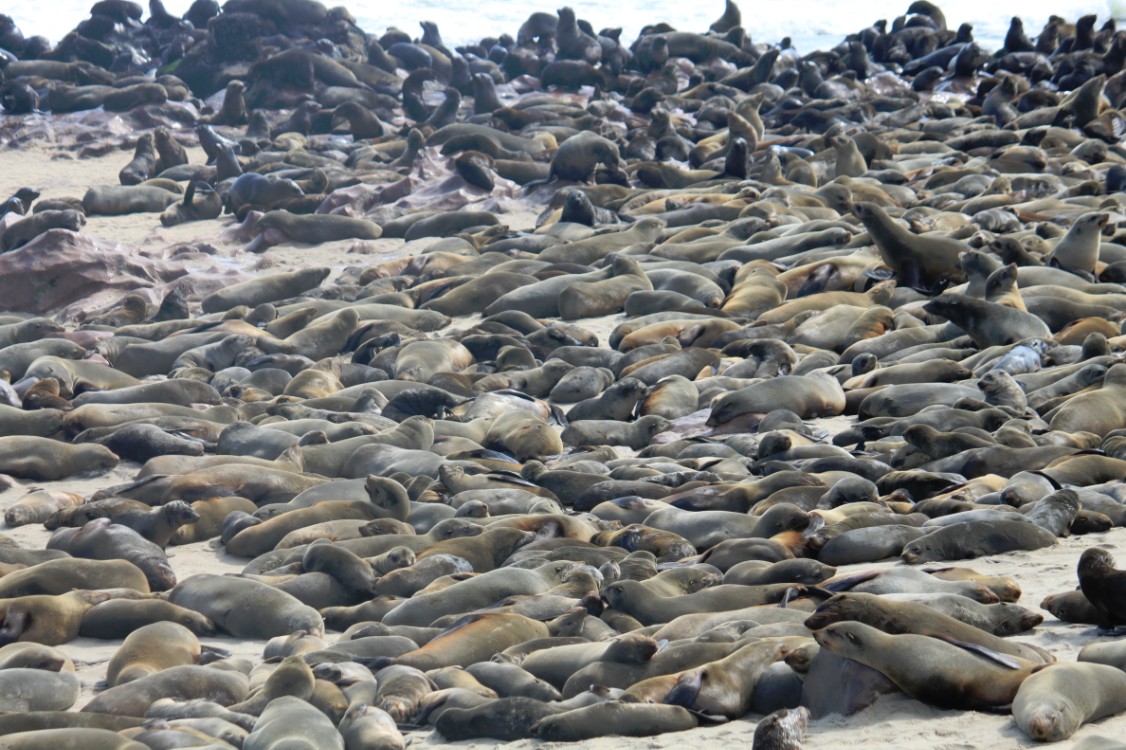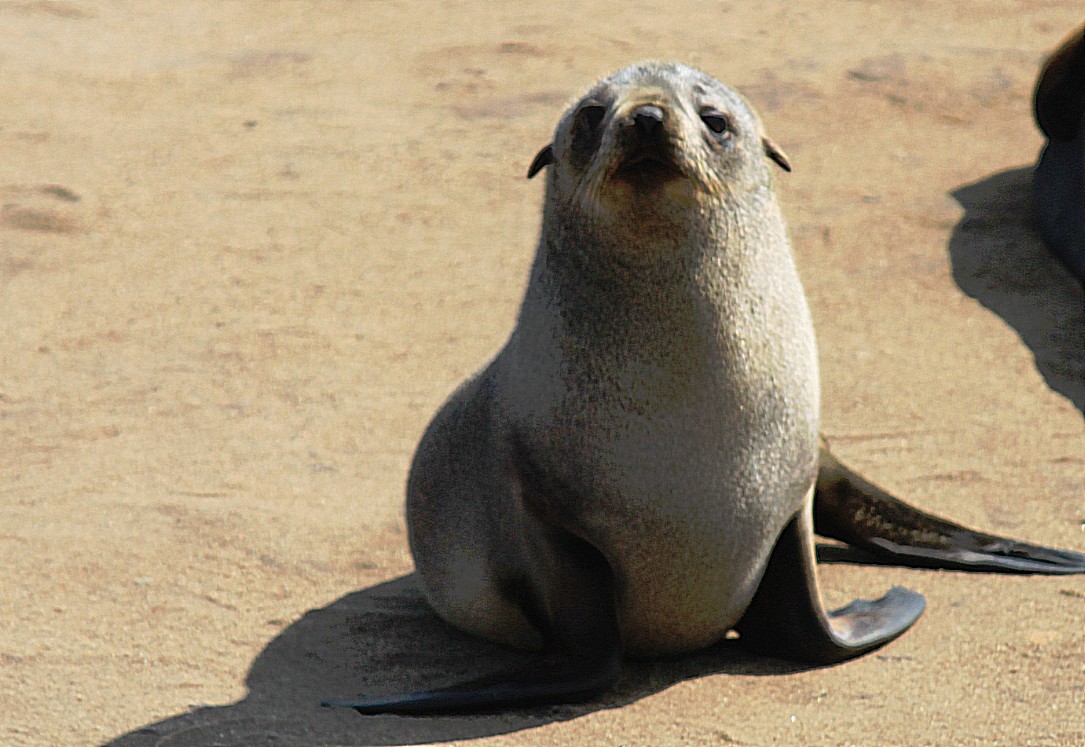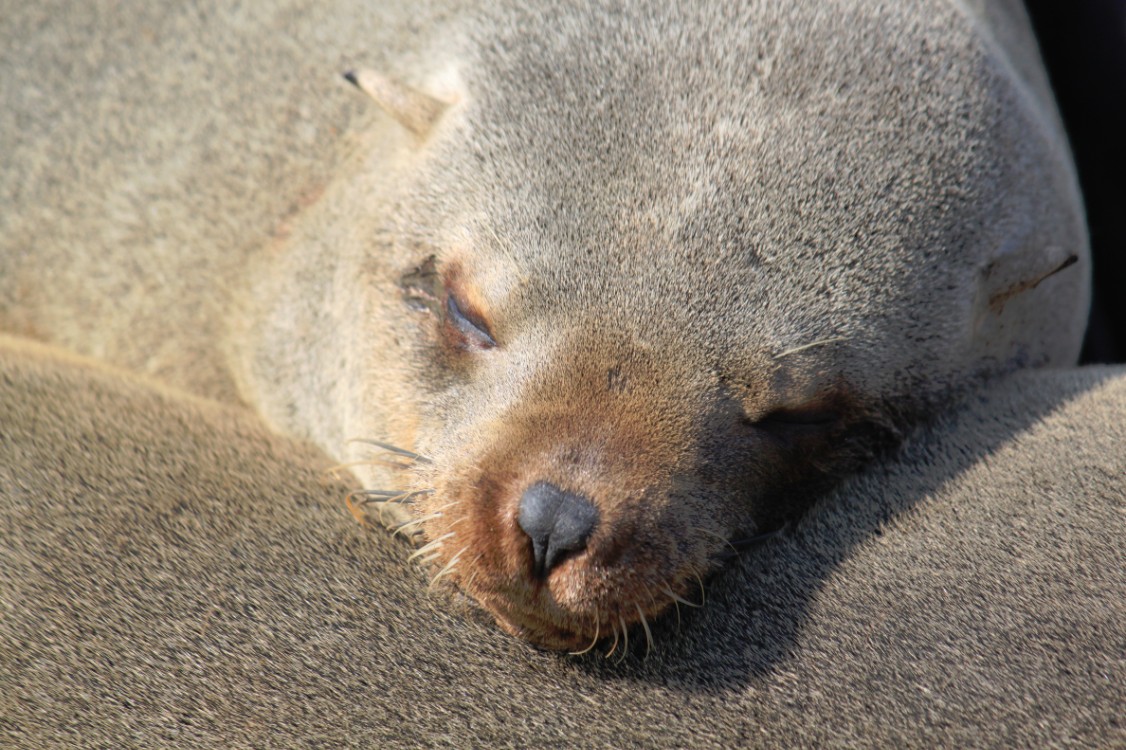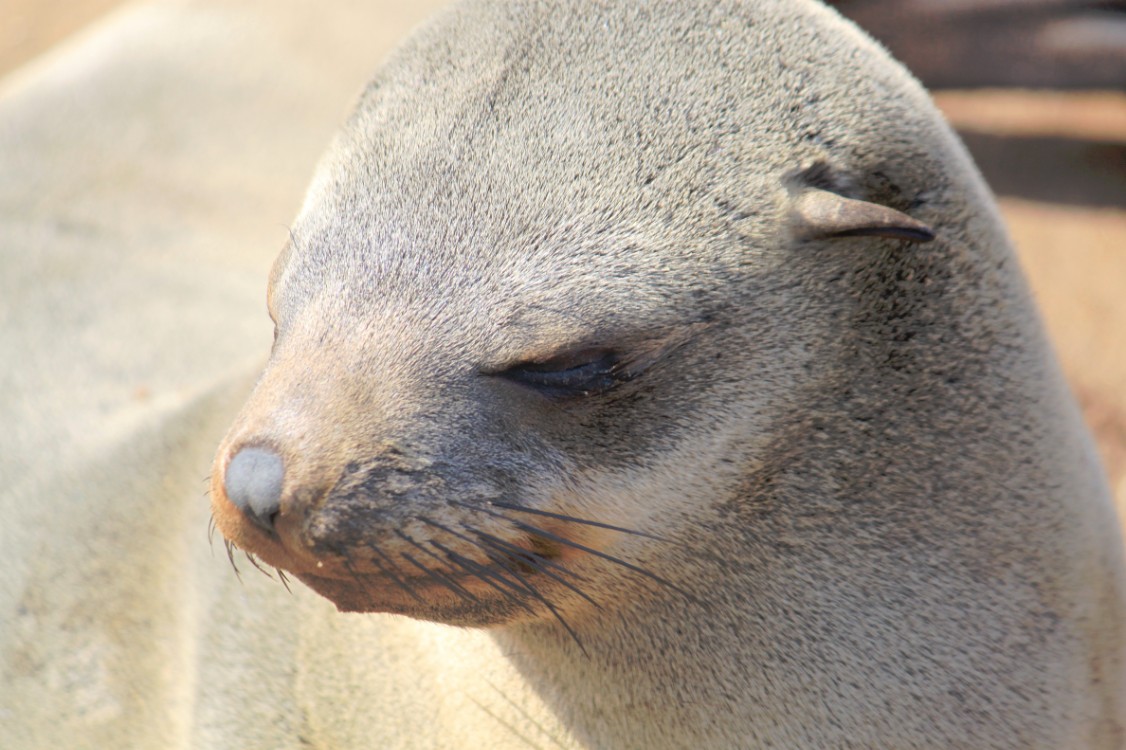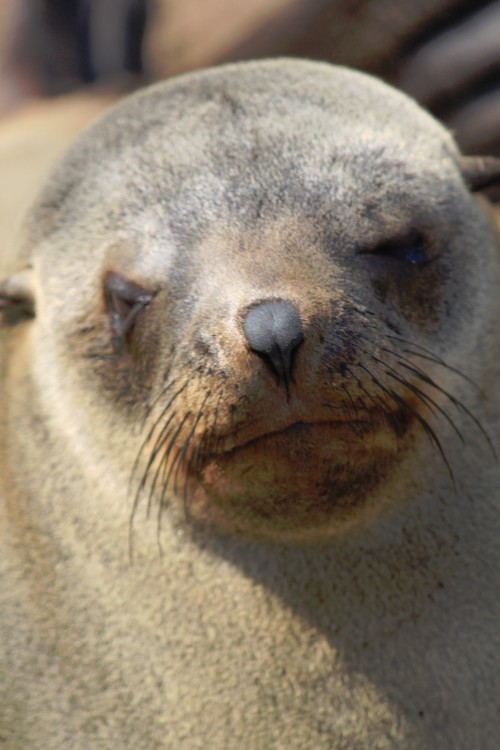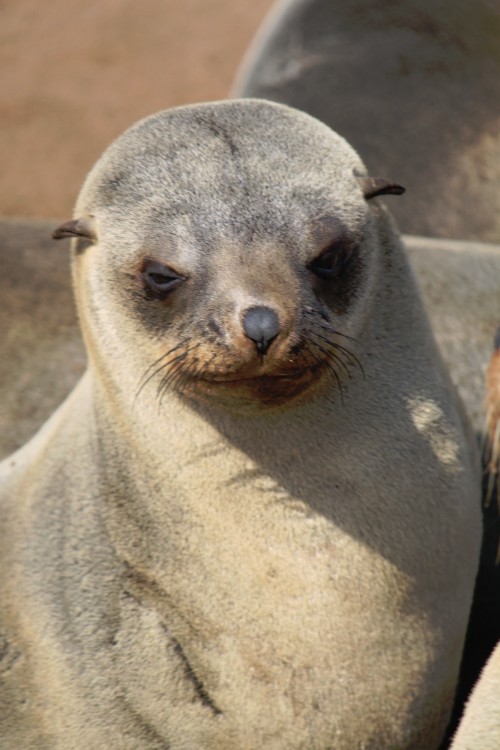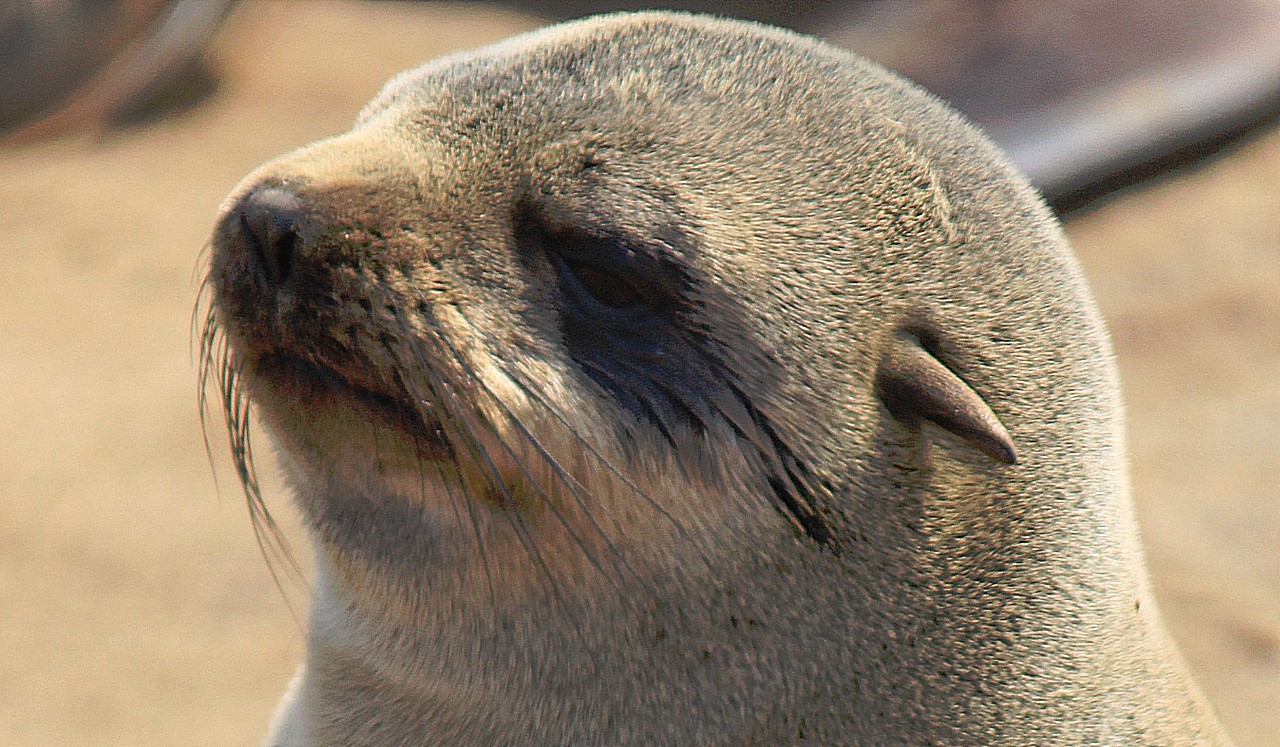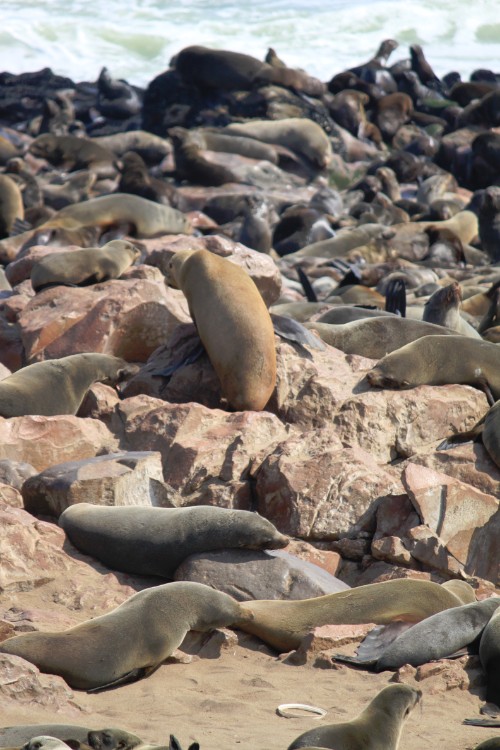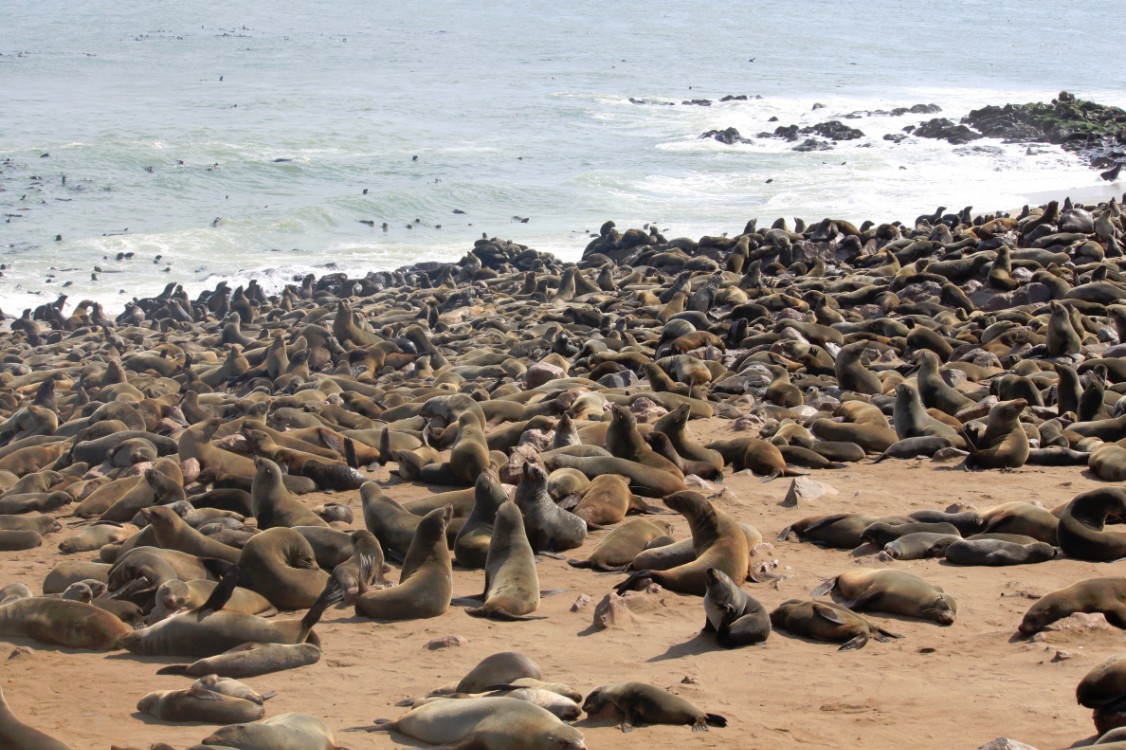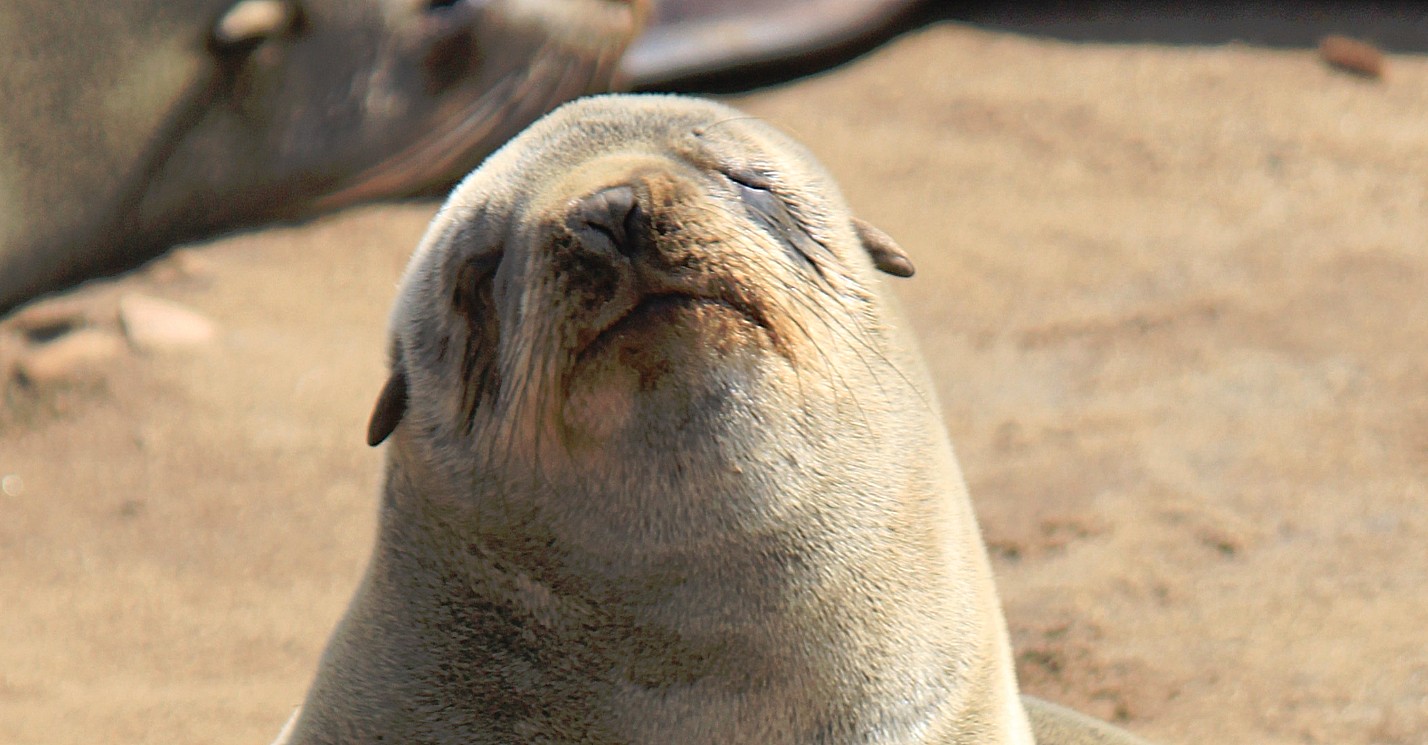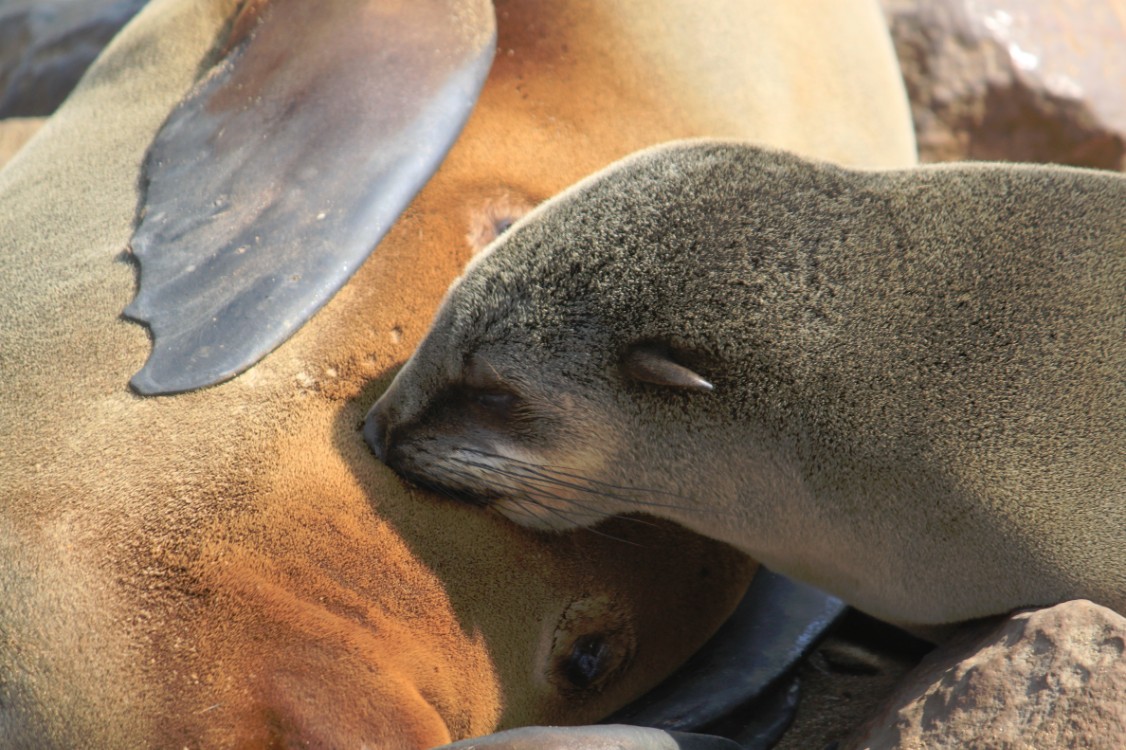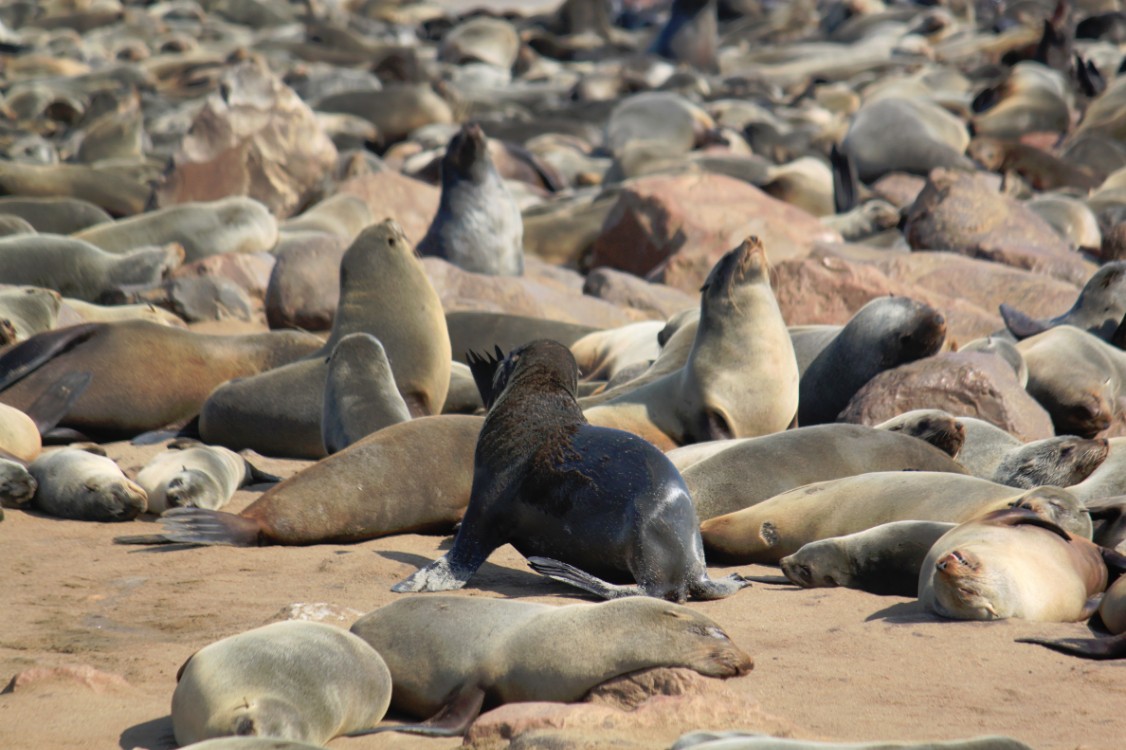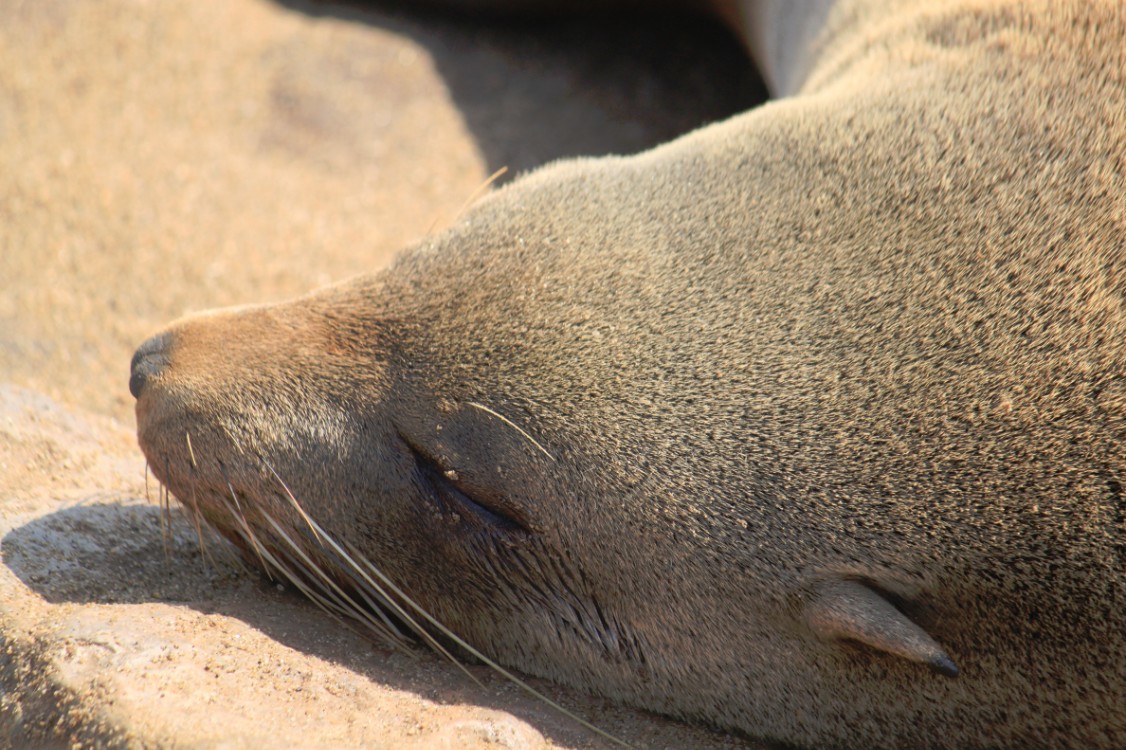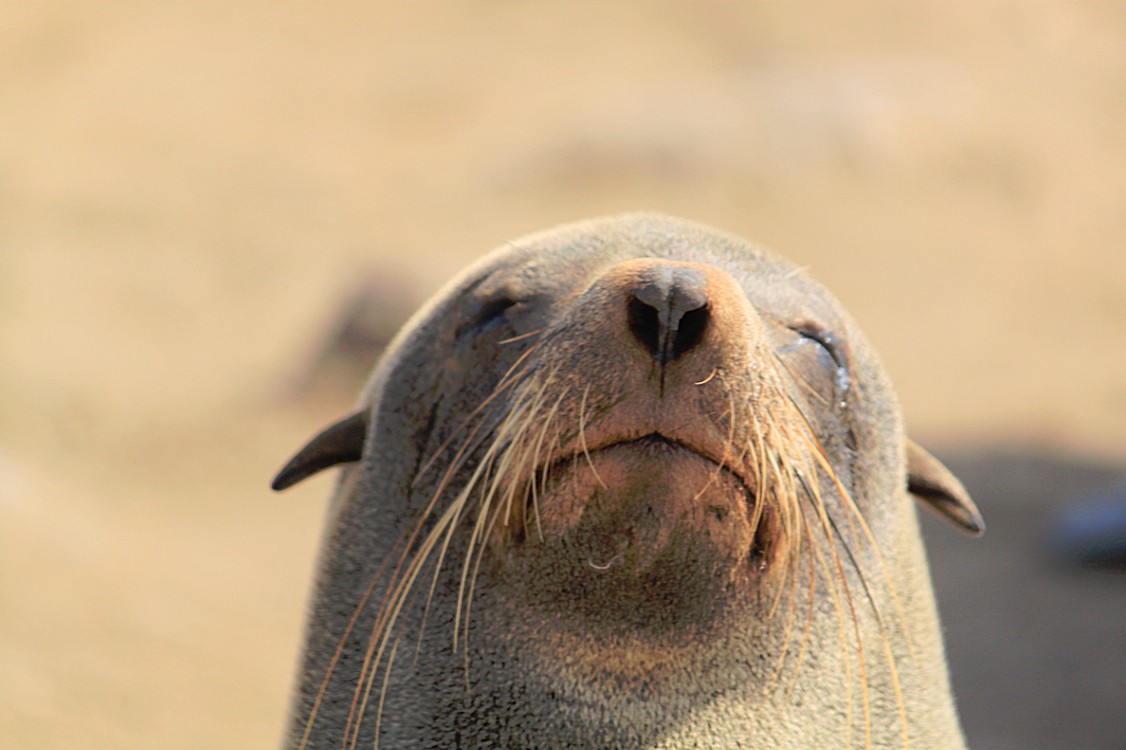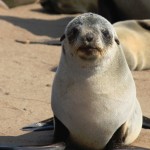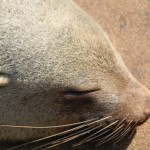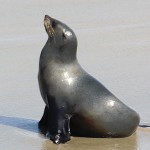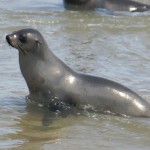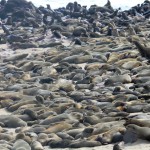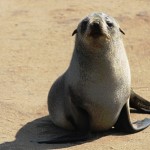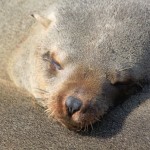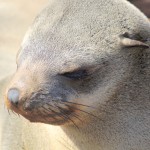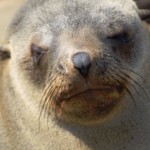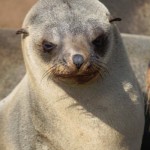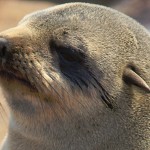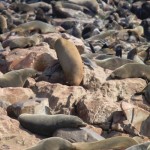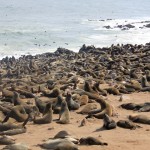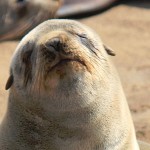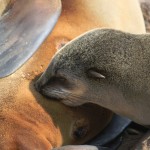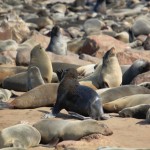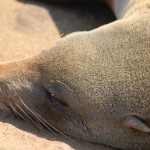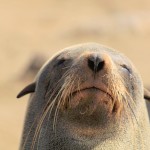8. Namibia: Skeleton Coast north of Swakopmund (2) and Cape Cross Seal Reserve – 2015
The Wandelgek left Swakopmund at early dawn and drove north along the Skeleton Coast passed the uranium mine of Wlotzkasbaken. Close to the village Namibia’s first desalination plant was opened in April 2010. The plant supplies water to the Trekkopje uranium mine 65 km north-east of Swakopmund which is Southern Africa’s largest uranium mine since it reached full production capacity in 2013.
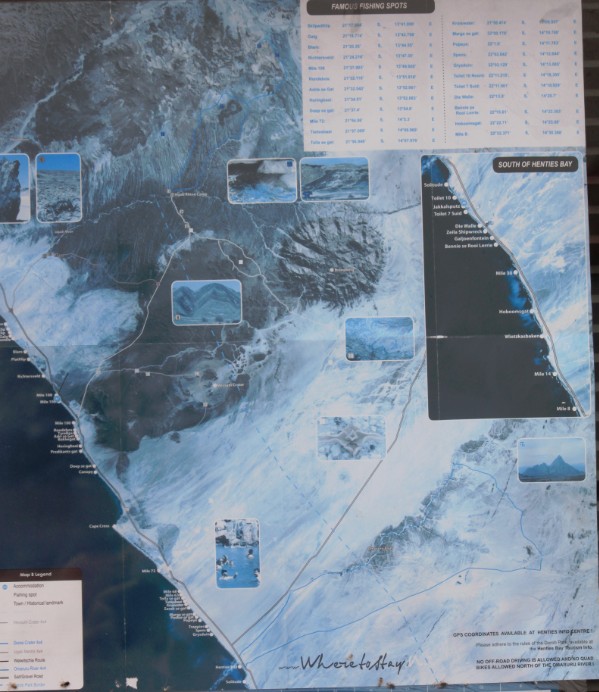 More north the road passed “the world’s longest campsite”. Jakkalsputz is the largest of the three fishing camps: Mile 72, Mile 108 and Jakkalsputz. The campsite has a total of 250 separate camp sites spread out along the length of the beach. The camp sites can accommodate up to a maximum of six people and both day visitors and overnight campers are welcome. Al a long the length of the beach you’ll find small toilet buildings which are very well visible in winter when there are not much campers. In summer the campsite gets so crowded that even this large amount of toilets isn’t enough to accommodate everyone. A lot of Namibians visit this campsite or the other two, to go on a fishing vacation with the whole family.South of Henties Bay are lots of great fishing spots…
More north the road passed “the world’s longest campsite”. Jakkalsputz is the largest of the three fishing camps: Mile 72, Mile 108 and Jakkalsputz. The campsite has a total of 250 separate camp sites spread out along the length of the beach. The camp sites can accommodate up to a maximum of six people and both day visitors and overnight campers are welcome. Al a long the length of the beach you’ll find small toilet buildings which are very well visible in winter when there are not much campers. In summer the campsite gets so crowded that even this large amount of toilets isn’t enough to accommodate everyone. A lot of Namibians visit this campsite or the other two, to go on a fishing vacation with the whole family.South of Henties Bay are lots of great fishing spots…
Near Jakalsputz The Wandelgek saw the Zeila shipwreck which was full of birds, some even trying to nest there…
At the road side people were selling pink namibian salt cristals.
Further north the truck arrived at Henties Bay where it was time for a break at a nice restaurant at the Atlantic coast, overviewing the ocean and the beach.It was quite warm and sunny so it was nice to enjoy a hawaiian burger and a beer outside on the terrace.
On several places along the Skeleton Coast, The Wandelgek had seen these huge whale bones…
We went even further north towards Cape Cross and the famous seal reserve. A huge colony of noisy and teribly smelly seals is populating the beach there.
Cape Cross
Cape Cross (Afrikaans: Kaap Kruis; German: Das Kreuzkap; Portuguese: Cabo da Cruz) is a small headland in the South Atlantic in Skeleton Coast, western Namibia, on the C34 highway some 60 kilometres north of Hentiesbaai and 120 km north of Swakopmund on the west coast of Namibia.
History
The Portuguese navigator and explorer Diogo Cão was in 1484 ordered by King João II, as part of the search for a sea route to India and the Spice Islands, to advance south into undiscovered regions along the west coast of Africa. While doing so, he was to choose some particularly salient points and claim them for Portugal by setting up on each a stone cross called padrão.
During his first voyage, thought to have taken place in 1482, he reached a place he called Monte Negro, now called Cabo de Santa Maria, roughly 150 km southwest of today’s Benguela, Angola.
During his second voyage, in 1484–1486, Cão reached Cape Cross in January 1486, being the first European to visit this area. During this voyage he proceeded c. 1,400 km farther than during the first one. He is known to have erected two padrãos in the areas beyond his first voyage, one in Monte Negro, and the second at Cape Cross. The current name of the place is derived from this padrão. What can today be found at Cape Cross are two replicas of that first cross.
Cão’s first expedition took place only six years, and the second expedition’s end only two years before Bartholomeu Dias successfully rounded the Cape of Good Hope as the first European explorer in 1488.
Padrão
The original Cape Cross padrão was removed in 1893 by Corvette captain Gottlieb Becker, commander of the SMS Falke of the German Navy, and taken to Berlin. A simple wooden cross was put in its place. The wooden cross was replaced two years later by a stone replica.
At the end of the 20th century, thanks to private donations, another cross, more similar to the original one, was erected at Cape Cross, and thus there are now two crosses there.
The inscription on the padrão reads, in English translation:
| “ | In the year 6685 after the creation of the world and 1485 after the birth of Christ, the brilliant, far-sighted King John II of Portugal ordered Diogo Cão, knight of his court, to discover this land and to erect this padrão here”. | ” |
Seal reseserve
Today Cape Cross is a protected area owned by the government of Namibia under the name Cape Cross Seal Reserve. The reserve is the home of one of the largest colonies of Cape fur seals in the world.
Cape Cross is one of two main sites in Namibia (the other is in Lüderitz) where seals are culled, partly for selling their hides and partly for protecting the fish stock. The economic impact of seals on the fish resources is controversial: While a government-initiated study found that seal colonies consume more fish than the entire fishing industry can catch, animal protection society Seal Alert South Africa estimated less than 0.3% losses to commercial fisheries.
After visiting the Seal Reserve, we drove south, to Henties Bay again and then turned east.
The road crossed the Skeleton coast towards Damara land and the Brandberg, Namibias highest mountain. It began getting dark.

